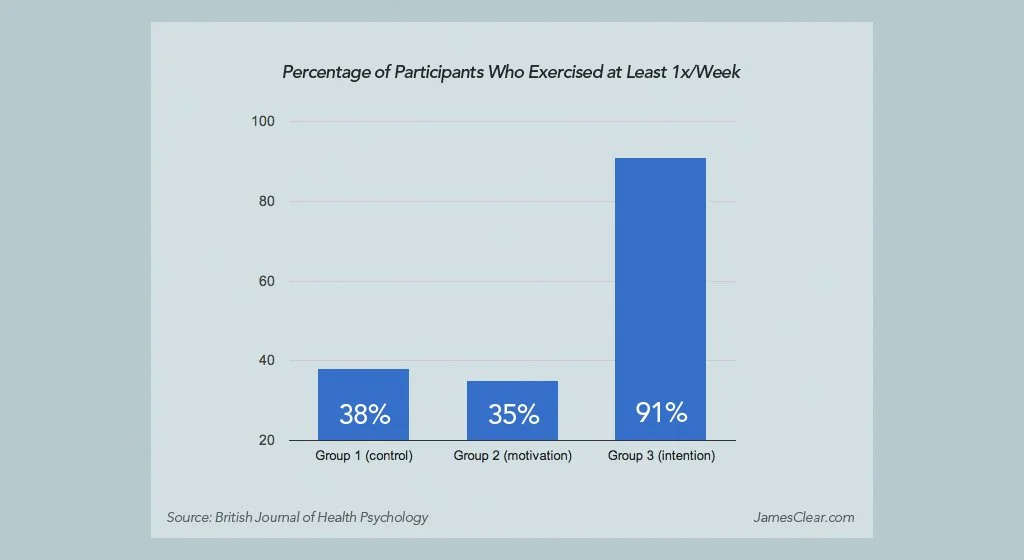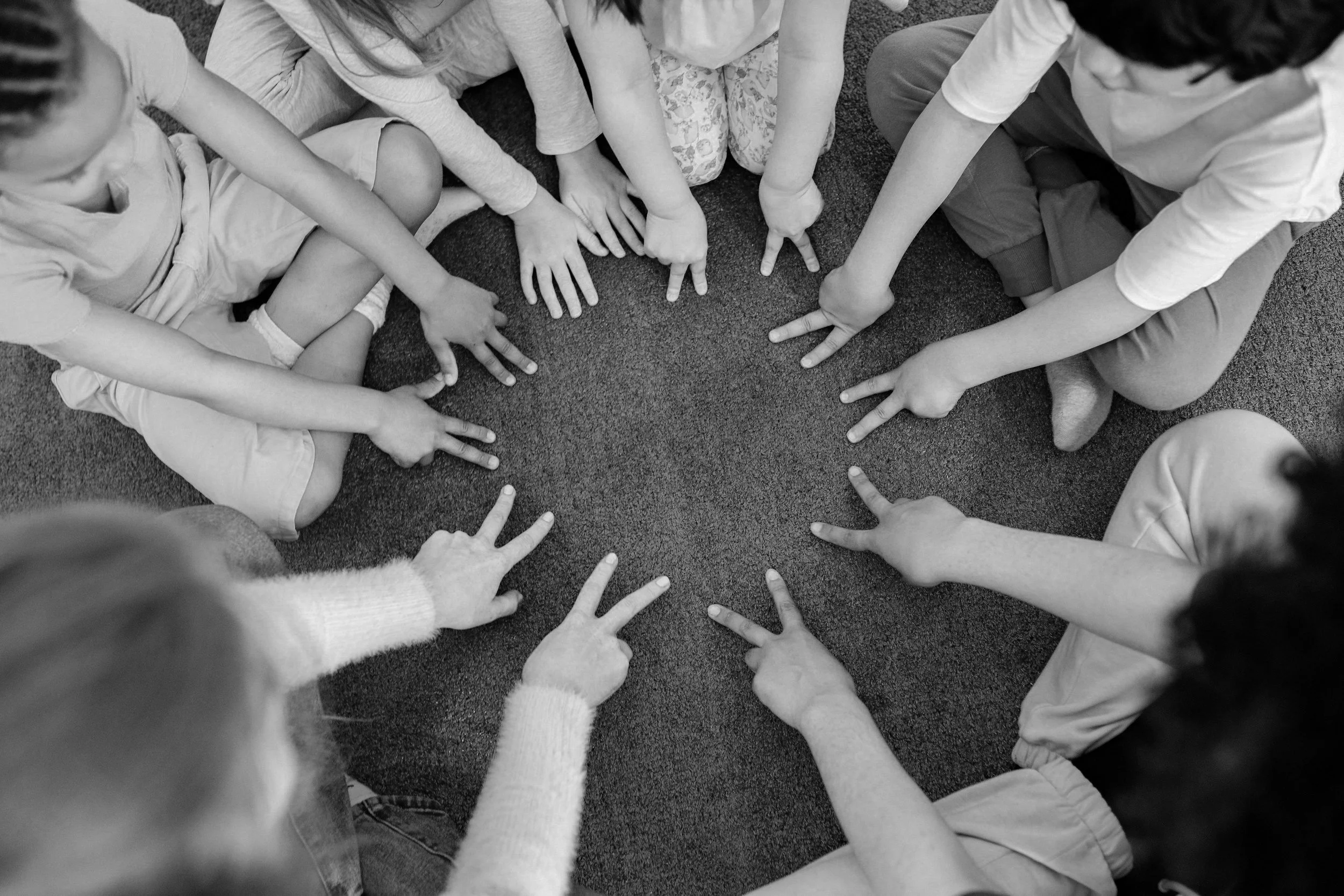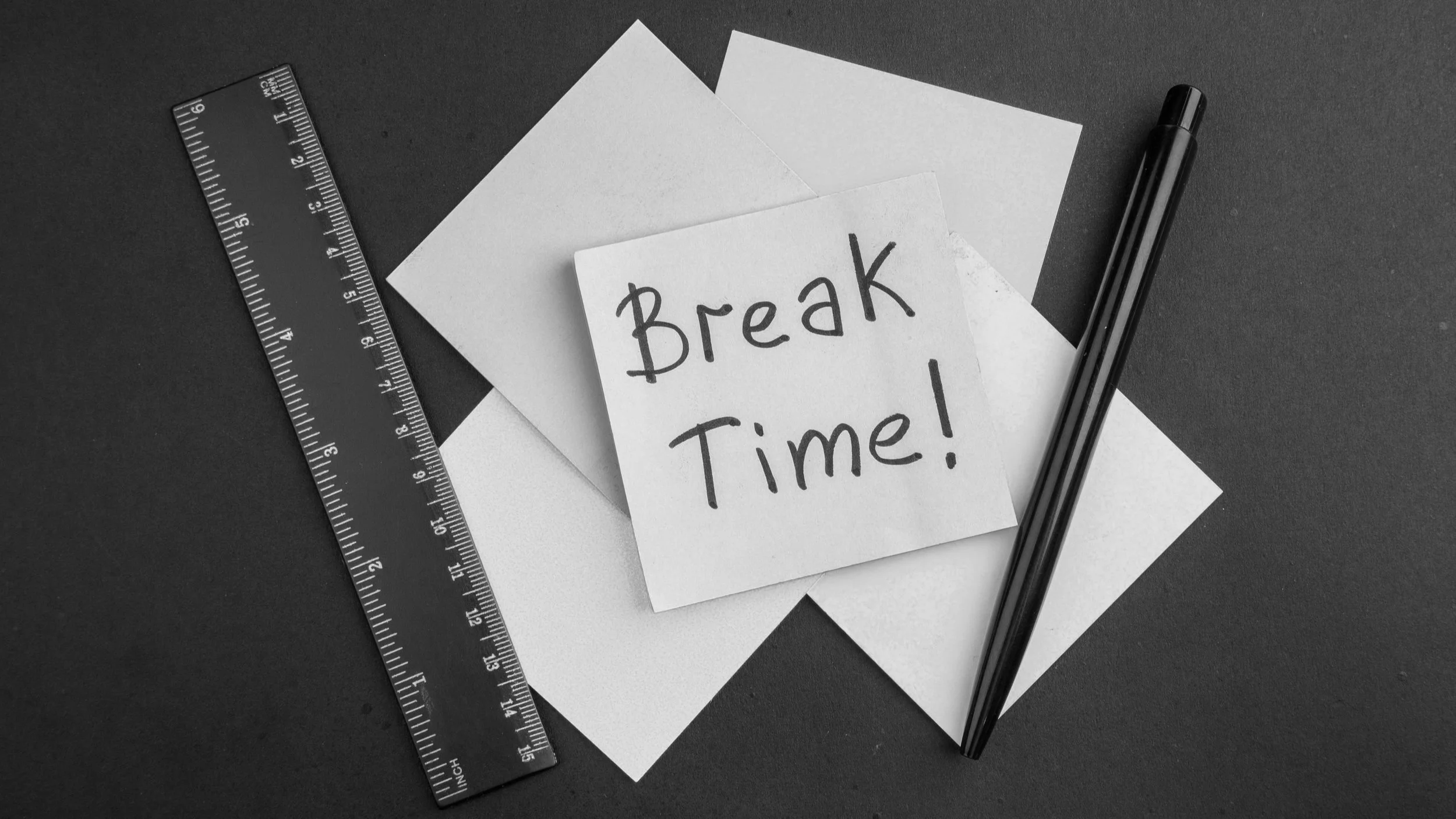Atomic Habits
Table of Contents
The 1st Law of a Good Habit: Make It Obvious (Cue)
The 1st Law of a Bad Habit: Make it Invisible
The 2nd Law of a Good Habit: Make It Attractive (Craving)
The 2nd Law of a Bad Habit: Make it Unattractive
The 3rd Law of a Good Habit: Make It Easy (Response)
The 3rd Law of a Bad Habit: Make it Difficult
The 4th Law of a Good Habit: Make It Satisfying (Reward)
What Are Habits?
This post’s inspiration comes from Atomic Habits, written by James Clear. You can find his work by clicking on this link.
Habits are the silent builders of our lives, shaping our journey toward success or trapping us in stagnation, all through the magic of repetition.
These small, repeated actions can be seen as building blocks, stairs, or a hike up a hill. Over time, they lead to extraordinary transformations, making them one of the most reliable tools for personal growth and success.
I’ll say it again: habits are one of the most reliable tools for personal growth and success.
One of my favorite quotes is, “Rome wasn’t built in a day.”
James Clear takes it a step further and states, “Rome wasn’t built in a day, but they were laying bricks every hour. You don’t have to build everything you want today, just lay a brick.”
Like all professions, teachers can benefit from picking up some strong habits. They help us manage our time better, create a positive environment in the classroom, and keep improving our teaching skills.
By focusing on well-being, teamwork, and learning for life, teachers not only boost their own sense of grit but also set a great example for their students and colleagues.
Let’s get started.
In his book Atomic Habits, James Clear explains how small, consistent changes lead to long-term improvements.
James Clear introduces the concept of the 1% Rule, which is straightforward. If you improve by just 1% each day over a year, you will achieve a remarkable 37% improvement.
This principle drives my commitment to writing for Teacher Daydreamer. Each day, I dedicate at least a few minutes to, at times, up to four hours on a weekend to capture my thoughts on this platform.
I view this project as a long-term journey, realizing it may take years or even decades to achieve my vision. Rather than fixating on short-term goals, I focus on developing good habits. This keeps me from feeling overwhelmed or burned out while striving to create content.
Clear identifies four important steps in changing habits:
Cue: The trigger that initiates the behavior.
Cravings: The desire for the reward that the habit offers.
Response: The actual action or thought that follows.
Rewards: The end goal of the habit.
Using these steps, here are three positive habits that successful teachers may want to develop:
Staying organized
Cultivate a sense of belonging
Reducing stress
Additionally, we can look at a negative habit some teachers struggle with: yelling in the classroom.
The 1st Law of a Good Habit: Make It Obvious (Cue)
The ancestor of every action is… thought.
- Ralph Waldo Emerson
All habits begin with the cue, which starts a particular behavior.
Think about the many times you glance at your phone. What is your initial reaction?
If you’re like me, just seeing your phone gives you a little dopamine boost, and suddenly, your hand is reaching for it to see what’s new in the last hour.
It’s almost as if that moment of visually laying eyes on your phone is tied to responding to friends, scrolling through social media, or checking emails. And that’s because it is.
So, how do we begin building good habits?
We start by making them obvious. We need to force a connection between a cue and an action, but that requires intentionality.
Let's dive into a 2001 Great Britain study on improving exercise habits.
The researchers worked with people over two weeks and split them into three groups:
Group #1 was the control group. They just had to track how much exercise they were doing.
Group #2 was the “motivation” group. Besides tracking their fitness progress, they read some material about the benefits of exercise.
Group #3 was the “intention” group. They got the same info as Group #2 but also had to devise a specific plan for when and where they would work out during the week. They filled in a plan that said things like, “I’m going to do at least 20 minutes of vigorous exercise on [DAY] at [TIME] and [PLACE].”
Let’s check out the results.
Source: https://jamesclear.com/implementation-intentions
91%. Holy $#!&. 91%!
Take a moment to digest that. 9 out of 10 people actually followed through on what they were asked to do.
While we shouldn’t be married to this statistic, it shows how powerful writing a tiny plan can be for creating new habits.
So, we can grab a sticky note, place it where you’ll see it often, and design an action plan:
“I will [BEHAVIOR] at [TIME] in [LOCATION].”
Imagine applying this to any of the three good habits below. Here’s what they might look like.
Good Habit #1: Stay Organized
“I will spend 20 minutes organizing my desk on [WEDNESDAY] at [PLANNING PERIOD] in the [CLASSROOM, obviously].”
This can work for more than just tidying up your desk.
You can also use it to sort out graded papers from those still needing grading. It can also help review an upcoming lesson or plan for the week ahead.
The whole point of this habit is to continue putting you in a proactive position and in control for the days ahead without thinking about it. Sometimes, a little plan is all you need.
Good Habit #2: Cultivate a Sense of Belonging
“I will dedicate 10 minutes to conducting a community-building lesson on [MONDAY] before [START OF LESSON] in the [CLASSROOM/GYM/HALLWAY].”
You can also use this time to explore new community-building activities you can implement the following day. If you're seeking new ideas, check out Edutopia’s article featuring 10 creative suggestions.
From my experience, I found “shout-outs” and “snowball toss” particularly effective. One of my biggest regrets from my teaching career was not prioritizing these exercises more often.
Another approach to foster individual connections is to write personalized compliments or positive observations on sticky notes for each student. For more insights on this, click on my link.
Good Habit #3: Reduce Stress
“I will finish grading work on [FRIDAY] [AFTER DISMISSAL] at the [CLASSROOM] before leaving school to go home and relax.”
We all know why cutting down on stress is important. It helps us have longer careers, make better decisions, and build solid relationships with our students.
Are we really trying to put all that at stake because Annie Edison is dying to know her grade on the Spanish test?
If it can wait, draw a clear line between your personal life and work.
Some may argue that working an extra 30 minutes at home isn’t a big deal. While that’s true in the sense of time, you’re still blurring the line between your personal and work life. That’s the real difference we should be discussing, not the context of time.
The 1st Law of a Bad Habit: Make It Invisible
Monkey see, monkey do. Human being don’t see. Human being don’t do.
- Mokokoma Mokhonoana
Back in 1971, researchers found something shocking: during the Vietnam War, about 35% of soldiers overseas tried heroin at least once, and 20% were dealing with addiction. This problem led President Nixon to start the Special Action Office of Drug Abuse Prevention to help service members who were coming back home.
After the war ended, among those who tried heroin, only about 5% got re-addicted within a year, and just 12% relapsed after three years.
It turns out that nine out of ten soldiers who used it weren’t using it anymore three years after returning home. Nine out of ten.
Why? It wasn’t just a matter of willpower or a changed mindset after the war.
The main reason was that the drug was no longer seen lying around to trigger the “cue” for the habit.
James Clear reveals that once a habit is ingrained in the grooves of the brain, that’s it. It’s nearly hard to forget it.
The best way to break bad habits? Keep them out of sight. By reducing the trigger of noticing a bad behavior, it becomes less likely to fall back into them.
For the soldiers, not seeing heroin meant a huge drop in the chance of relapse—around 90%. If these findings were conducted with the utmost fidelity, then this statistic is revolutionary.
This idea can help tackle another common bad habit: yelling at students. Understanding and using these principles can create a better, more positive environment for teachers and students.
Bad Habit: Yelling
Yikes. And guilty as charged.
Yes, there are times it might be necessary to shout, like warning someone about an oncoming car—but most of the time, cars don’t usually drive through the classroom. If you’re a student reading this, don’t get any ideas either.
To start, we should pinpoint the “cue” that triggers yelling. For teachers, it might be a noisy classroom or disrespectful students.
How do we make them invisible, especially if we work with the ones who generate them?
To handle the noise better, try using proactive techniques, like hand signals or ringing a chime, to keep the noise in check.
First, regarding disrespectful students, make it clear that everyone, including yourself, will be treated with respect and dignity. Second, it helps to have one-on-one talks with specific students who have built up a disruptive reputation ahead of time. Let them know you’re not their enemy and are open to discussing their issues. This way, two steps are in place to help you become proactive.
If these tactics don’t work and the yelling triggers still show up, avoid falling back into old habits. Also, just because one strategy failed once doesn’t mean it will continue failing. Consistency is key.
The 2nd Law of a Good Habit: Make It Attractive (Craving)
I feel a bigger sense of fulfillment when writing a novel, and short stories are more about instant gratification.
- Jami Attenberg
Dopamine is the chemical that drives our habits, but there’s more to it than that.
Back in 1954, researchers James Olds and Peter Milner ran a study where they blocked dopamine in rats, and the results were drastic—they completely lost their motivation, even the will to live. They just didn’t crave anything at all.
In another experiment, scientists ran a similar study, giving the rats sugar while blocking dopamine. The rats enjoyed it but just didn’t crave it.
Then, in a different setup, the scientists flooded the rats with dopamine whenever they poked their noses in a box. The rats went wild, poking that box up to 800 times an hour to get their dopamine fix.
To avoid fallacies, humans are not rats, but we still respond to dopamine in similar ways. Understanding that we aren’t that different when falling prey to dopamine is crucial.
The key takeaway is that when it comes to habits, dopamine isn’t just associated with the reward; it’s also associated with anticipation.
Think about it: if you're hanging out with a friend and they suggest ordering a pizza instead of cooking, that little idea can immediately spark a craving for pizza.
The suggestion of ordering pizza was the cue, triggering the craving for pizza. Your mouth was probably already watering as soon as pepperoni pizza entered your mind.
So, what steps can we take to effectively build strong habits that connect a cue to a craving?
Temptation Bundling
We can do this with temptation bundling. It’s pairing something you want to do with a reward.
You could say:
“After I [GOOD HABIT], I will [REWARD].”
This helps create a craving by linking your good habit to a fun reward. A healthy, fun reward.
Let’s see these in action.
Good Habit #1: Stay Organized
Craving: Check the news, review your stock portfolio, or enjoy a snack.
After I [ORGANIZE MY DESK], I will [CHECK THE NEWS/OPEN MY M1 FINANCE APP/ENJOY THE SNACK I PACKED].
Tackle the task you’re reluctant to do first, so you can enjoy a reward afterward.
Good Habit #2: Cultivate a Sense of Belonging
Sometimes, the habit itself generates a "reward."
After I [TAKE FIVE MINUTES FOR THREE “SHOUT-OUTS”], I will [ENJOY SOME HEARTWARMING MOMENTS AND HELP BRING THE STUDENTS TOGETHER].
Or
After I [CONDUCT A SNOWBALL TOSS EXERCISE], I will [THROW MINE AS HARD AS I CAN AT JERRY FOR THE COMMENT HE MADE THE OTHER DAY].
Oops. Disregard the last one…
Setting jokes aside, keep the 1% rule in mind. Small actions every day will compound to produce greater results.
Good Habit #3: Reduce Stress
At the time of writing this, Squid Game season 2 had just been released on Netflix. Y’all know what time it is.
Craving: Watch Squid Game S2.
After I [FINISH PREPARING FOR NEXT WEEK’S LESSON MATERIALS], I will [GO HOME AND BINGE WATCH 456 PLAYERS LAY IT ALL ON THE LINE, ALL GAS NO BRAKES].
The 2nd Law of a Bad Habit: Make It Unattractive
The secret of ugliness consists not in irregularity, but in being uninteresting.
- Ralph Waldo Emerson
In his book, Clear states that our habits come from deeper desires.
We’re wired for social acceptance, which is why we post on Instagram.
We don’t like uncertainty, so we turn to Google for answers.
Now, consider smoking. Many think it relieves stress, but while some smoke, others cope in healthier ways, like exercising or sipping herbal tea.
If you think smoking alleviates stress, realize that you’re fabricating a false sense of comfort while healthier alternatives exist.
Believing that smoking enhances your social life is a misconception; it’s your personality that connects with others, not the cigarettes.
Even if you feel smoking allows you to enjoy fresh air, you’re trading one harmful habit for another.
When you understand the reality of smoking and the harm it causes, you'll start to see it as unattractive. This knowledge can help you make a thoughtful choice to quit.
Bad Habit: Yelling
Let’s consider the deeper reasons why some teachers yell at their students.
Yelling often stems from a desire for control and the fear of losing it. When teachers feel out of control in the classroom, it creates uncertainty, such as student rebellion and embarrassment.
Instead of yelling, teachers should focus on managing their own emotions.
Noise doesn’t have to signal chaos. In fact, we often associate it with excitement at a concert or sporting event.
Also, while yelling can instill temporary fear, it complicates the teacher-student relationship and makes learning more difficult.
Some people tend to shut down when they are yelled at or when they hold onto feelings of resentment.
As teachers, our main goal is facilitating learning, and fear can get in the way. You may have to ask yourself what is more important in your class.
Now that we have made yelling unattractive and addressed the void it fills, perhaps we can start using healthier alternatives instead.
The 3rd Law of a Good Habit: Make It Easy (Response)
Most of us have two lives: the life we live, and the unlived life within us. Between the two stands Resistance.
- Steven Pressfield
This is my favorite section because of several strategies I learned from James Clear.
Let’s go back a bit.
Jerry Uelsmann, a professor at the University of Florida, divided his photography class into two groups: the “quantity group” on the left and the “quality group” on the right. The student’s grades depended on their assigned group.
The quantity group's grade was based on how many photos they submitted. Students who turned in 100 photos got an A, 90 got a B, and so forth.
The quality group’s grade came from one single photo—the perfect one.
Which group do you think submitted the best photos? It was the quantity group. Taking many photos and trying different techniques, like composition and lighting, helped those students learn from their mistakes and improve their skills. Meanwhile, the quality group assumably spent their time worrying about perfection.
What’s the takeaway from this? We often get caught up overthinking and aiming for perfection, which can hold us back.
Instead, the key is to dive in and start doing. Habits become second nature with practice, so it’s important to begin with small, manageable steps to build lasting habits.
So, how do we make it easier to start our habits? Here’s how.
Two-Minute Rule
The Two-Minute Rule is about breaking down your end goal into smaller, manageable steps.
For instance, if you want to run a marathon but find it hard to stay motivated, start with a simple habit: put on your running shoes and walk or run for just two minutes each day. When those two minutes are up, you can pack it up and leave.
This approach works because it keeps you from feeling overwhelmed by the idea of running a full marathon. Instead of stressing about the big goal, you take it one step at a time.
Remember, we’re trying to make our habits as easy as possible to ingrain.
I’ve found this method incredibly helpful for this project, Teacher Daydreamer. Over the past few weeks, I set aside a few minutes each morning after my gym workouts to focus on writing blog posts. Gradually, I found myself spending longer periods—sometimes up to a couple of hours—when I got into the “flow state.”
Remember the idea of improving just 1% at a time? In just three weeks, I managed to create Teacher Daydreamer’s Homepage and About Page, write two posts for the “Memories” section, one post for “Books,” and even change the font color on the website (which was a lot more difficult than I expected).
In short, start small by spending no more than two minutes daily. You want to make it as easy as possible until you start performing the good habits automatically. As you continue doing this, you’ll find that those two minutes can gradually grow into an hour or more without you even noticing.
Automation
The second strategy is “automation.”
In our modern world, we often use technology in our daily routines without even realizing it. For example, I dislike sweeping the floor but enjoy having a clean home. So, I added a robot vacuum to my birthday wishlist, and once I got it, it started cleaning my floors three times a week. The thing is practically my best friend.
Even if you don’t have a robot vacuum, many people use dishwashers to wash their dishes instead of scrubbing them by hand daily.
When it comes to managing my money, I sometimes forget to put money into my retirement savings or spend more than I should, making it hard to save as much as I want. I’ve set up an app that automatically puts money into my savings to make things easier.
When I write my blog posts, I just let my thoughts flow without worrying too much about how they sound. After I have everything down, I use Grammarly to help polish and improve my writing. This approach makes it easier for me to keep writing without getting stuck and helps my readers by making the content clearer and faster to read.
Teachers can also benefit from using automation to create good habits.
I can confidently say that this approach works, and I encourage everyone to try it when building a good habit.
Good Habit #1: Stay Organized
If you want to maintain an organized desk, take just two minutes to tidy up your space as soon as you arrive. By making this a daily habit, you'll associate entering the classroom with organizing, which will soon become second nature.
When it comes to lesson planning, if you're having trouble getting ready for the upcoming week during your planning period, spend the first two minutes focused on organizing your lessons. After those two minutes, you can stop. This practice encourages you to use your planning time for its intended purpose rather than getting sidetracked by eating or chatting with colleagues.
As for classroom organization, I assigned classroom jobs and rewarded students based on how well they performed their duties. At the time, my school partnered with local grocery stores, and students could use school currency to buy items provided by these stores every quarter.
In this way, classroom jobs can help automate the organization process in the classroom.
For lesson planning, programs like ChatGPT can quickly summarize a lesson in seconds. Just remember to adjust the content to fit your specific needs.
Good Habit #2: Cultivate a Sense of Belonging
You can do quick activities that take just 2 minutes or save time by looking up community-building exercises online or asking ChatGPT to create a plan. I usually like to spend about 5 minutes giving “shout-outs” in the classroom, but if you're pressed for time, you can shorten it to 2 minutes.
Again, here’s the link from Edutopia if you need more inspiration.
To “automate” your community-building habits, try gathering a collection of fun discussion ideas by asking silly questions and putting them in a jar. You can choose a student each morning to draw an idea from the jar. Then, give everyone a couple of minutes to write their responses and share what they came up with before class starts. When you consistently use these strategies, students will start to view this practice as a normal part of their daily routine in the classroom.
Good Habit #3: Reduce Stress
Besides using AI programs to brainstorm lesson plans, one helpful solution is using a cloud storage system and always saving your lessons there. This way, you can access them even if your computer crashes—something I regret not doing.
For teachers of younger students, if there's downtime in class, consider enrolling your students in learning platforms like Prodigy. If you've already outlined your curriculum for a few weeks, you can select specific learning objectives for that time. This allows students who finish their work early to use any available computers for extra practice, all while you keep an eye on their progress!
The 3rd Law of a Bad Habit: Make It Difficult
To fly, we have to have resistance.
- Maya Lin
James Clear writes about a strategy called a commitment device, a decision you make now that helps you stick to good behaviors in the future. It’s a way to keep yourself on track with positive habits while limiting the negative ones.
A classic example of a commitment device comes from Greek mythology. The hero Odysseus tied himself to the mast of his ship so he wouldn’t be tempted by the Sirens' beautiful singing, which would lure him into the sea.
In everyday life, many people adopt commitment devices to avoid unhealthy habits. For example, if you want to avoid snacking, you might choose not to buy snacks at the grocery store. Others might ask restaurant servers to pack up half of their meal before eating, which helps prevent overeating. Some even remove TVs from their bedrooms to resist the temptation of watching shows late into the night.
Ultimately, the idea is to create obstacles between ourselves and our bad habits, making it difficult to indulge in them without thinking.
Bad Habit: Yelling
To tackle this habit, one interesting strategy is to partner with a friend or colleague and reward each other for keeping your voices down instead of raising them.
You might also consider making a pact with your class. However, be cautious, as some students might try to provoke a reaction from you to earn those rewards.
You can also use automation with this change, like using a decibel meter as a tool. This way, both you and the students can monitor the noise levels in the classroom. Setting a limit on how loud you can get can encourage a more respectful environment, even with challenging students.
While setting a commitment to avoid yelling can be difficult, it has the potential to help rebuild trust with your students. This shift in approach may invite more open conversations and create opportunities for private discussions when needed.
It's definitely a challenge without a one-size-fits-all solution, but I hope these strategies provide a helpful starting point for anyone looking to promote a calmer atmosphere.
The 4th Law of a Good Habit: Make It Satisfying
The ability to discipline yourself to delay gratification in the short term in order to enjoy greater rewards in the long term, is the indispensable prerequisite for success.
- Brian Tracy
Have you ever considered why some people know eating unhealthy food is bad for them but still find it hard to resist? The answer lies in the appeal of immediate rewards.
The desire for instant gratification is often stronger than the benefits of waiting for something better later on. For example, we might order a pizza instead of cooking or let students watch a movie instead of preparing for the next day’s lesson.
One helpful strategy for developing good habits is habit tracking. Here are three key benefits of this practice:
It’s obvious: Seeing your progress on a calendar is motivating. Studies show that people who track their progress are likelier to improve than those who don’t. Think about the first experiment, in which about 38% of the participants were told to keep track of their fitness progress and actually did it.
It’s attractive: Watching your progress unfold serves as a great motivator. It can also make you less likely to break a streak because you’ll want to keep seeing how far you’ve come.
It’s satisfying: This is perhaps the most crucial benefit. Tracking your progress can feel rewarding in itself. Whether crossing things off a list or marking an “X” on your calendar, habit tracking helps maintain momentum.
However, there are a few important things to keep in mind:
Focus on tracking your most important habits. Trying to track too many habits at once can be overwhelming, so starting with just one or two that matter the most to you is better.
Be aware that your progress might not always reflect true achievement. For instance, if you’re tracking calories, you might feel tempted to push yourself to extremes, like limiting yourself to only 1000 calories. This can lead to a mindset of trying to “game the system,” which may distract you from your actual goals. This idea is known as Goodhart's Law, which states, “When a measure becomes a target, it ceases to be a good measure.”
There's also a related concept called overfitting that you might find interesting, which I discuss in another article [here].
When you start using habit tracking, remember to focus on just a few of the most important habits you want to build. This way, you'll set yourself up for success.
Good Habit #1: Stay Organized
If you're looking to stay organized, using a whiteboard or calendar can be a great way to track your habits. This can help you keep everything in order and visualize what you need to do. Below is an example.
For me, the two most important things in teaching were making sure I had a plan for the upcoming week and keeping my desk organized every day.
If you're looking to better understand your habits, try noting down how much time you spend on each task instead of just marking them as done. This can help you see how long it really takes you to complete important activities.
Good Habit #2: Cultivate a Sense of Belonging
Observe how there’s a streak that some teachers may not want to break.
Once these routines are practiced enough, they will become second nature!
Feel free to add your own community-based activities and be sure to note whether the students enjoyed them or not. It’s all about consistency!
Good Habit #3: Reduce Stress
Teachers who are struggling to balance work and personal life can benefit from trying out different strategies.
Start with one or two coping methods, discover what works best for you, and keep track of your progress if you're looking to reduce stress in your life!
The 4th Law of a Bad Habit: Make It Unsatisfying
The world’s greatest teacher is pain…
- Matshona Dhliwayo
Imagine that you're responsible for advising the President of the United States on how to prevent them from launching a nuclear war at the push of a button. It's important to remember that the President may never fully grasp the devastating impact a nuclear strike would have on millions of innocent lives.
So, how can we ensure that a President doesn’t become overly impulsive in such a critical situation?
Roger Fisher, a World War II veteran and Harvard Law School graduate, spent over three decades focusing on negotiation and conflict management. He founded the Harvard Negotiation Project and worked with various countries and world leaders to promote peace, resolve hostage crises, and negotiate diplomatic agreements.
Fisher proposed an unorthodox idea in the 1970s and 1980s as the threat of nuclear war grew. He suggested that to deter a President from casually ordering a nuclear strike, a volunteer should have a nuclear launch code implanted in a tiny capsule next to their heart. This volunteer would also carry a knife in a briefcase wherever they went with the President. If the time came to launch a nuclear attack, the President would be required to use the knife to cut open the volunteer’s chest, resulting in their death. This drastic action would ensure that the President fully understood the gravity and horror of their choice.
Those at the Pentagon believed that a President would likely never push the button if faced with such a situation.
The core message here is important: we are less likely to take drastic actions when we are confronted with the painful consequences they entail.
Bad Habit: Yelling
How can we make the urge to yell at students unsatisfying like the example above?
Simple. Implant a tiny capsule inside one of the student’s… I’m kidding.
The real solution lies in holding teachers accountable and establishing consequences for those moments of frustration when we raise our voices.
One approach is to create a personal contract: if you find yourself breaking it by yelling, you owe the class a treat, like cupcakes or cookies. Alternatively, you could offer a colleague a coffee as a form of accountability.
Another idea is to apologize to the class every time you yell. This could open up a conversation about how students feel when yelled at, promoting understanding and empathy.
Since we previously used habit tracking as a strategy for building good habits, we can actually do the same for the bad ones. Visually monitoring our negative behaviors may help us become more aware and less inclined to continue the streak.
Feel free to try out these suggestions, and if you find something that works for you, I’d love to hear about it.
Conclusion
In summary, habits are actions we automatically do without thinking. They become ingrained in our brains, and creating positive habits requires some effort, whether they are good or bad.
The four key principles for building healthy habits are:
Make It Obvious (Cue)
Establish a tiny action plan for when and where to perform your habit.
Ex: I will finish grading work on [FRIDAY] [AFTER DISMISSAL] at the [CLASSROOM] before leaving school to go home and relax.
Make It Attractive (Craving)
Use temptation bundling to strengthen the connection between the cue and craving.
After I [ORGANIZE MY DESK], I will [ENJOY THE SNACK I PACKED].
Make It Easy (Response)
Break down your tasks into simple steps with the Two-Minute Rule.
Ex: If you want to maintain an organized desk, take just two minutes to tidy up your space as soon as you arrive.
Use automation for your habits.
Ex: Use tools or programs like Prodigy or classroom jobs
Make It Satisfying (Reward)
See your progress visually with habit tracking.
Ex: Monitor a good habit over several weeks, and you’ll be motivated to keep the streak going
On the flip side, if you want to break unhealthy habits, here are some strategies to consider:
Make It Invisible
Keep triggers out of sight to reduce temptation.
Ex: Use hand signs or ring chimes to manage the classroom noise level
Make It Unattractive
Reflect on the underlying reasons for your habit.
Ex: If you find yourself yelling at students, consider if fear or stress is driving that behavior
Make It Difficult
Create barriers with a commitment device.
Ex: Use a decibel meter to track noise levels and make everyone accountable, including yourself
Make It Unsatisfying
Use pain as a consequence to deter you from repeating a bad habit.
Ex: Buy the entire class cookies if you yell
I want to wrap up this post with a quick reminder: remember the 1% Rule. If you focus on enjoying the process of building good habits instead of just stressing over goals, everything else will fall into place.
Trust the process.













































































